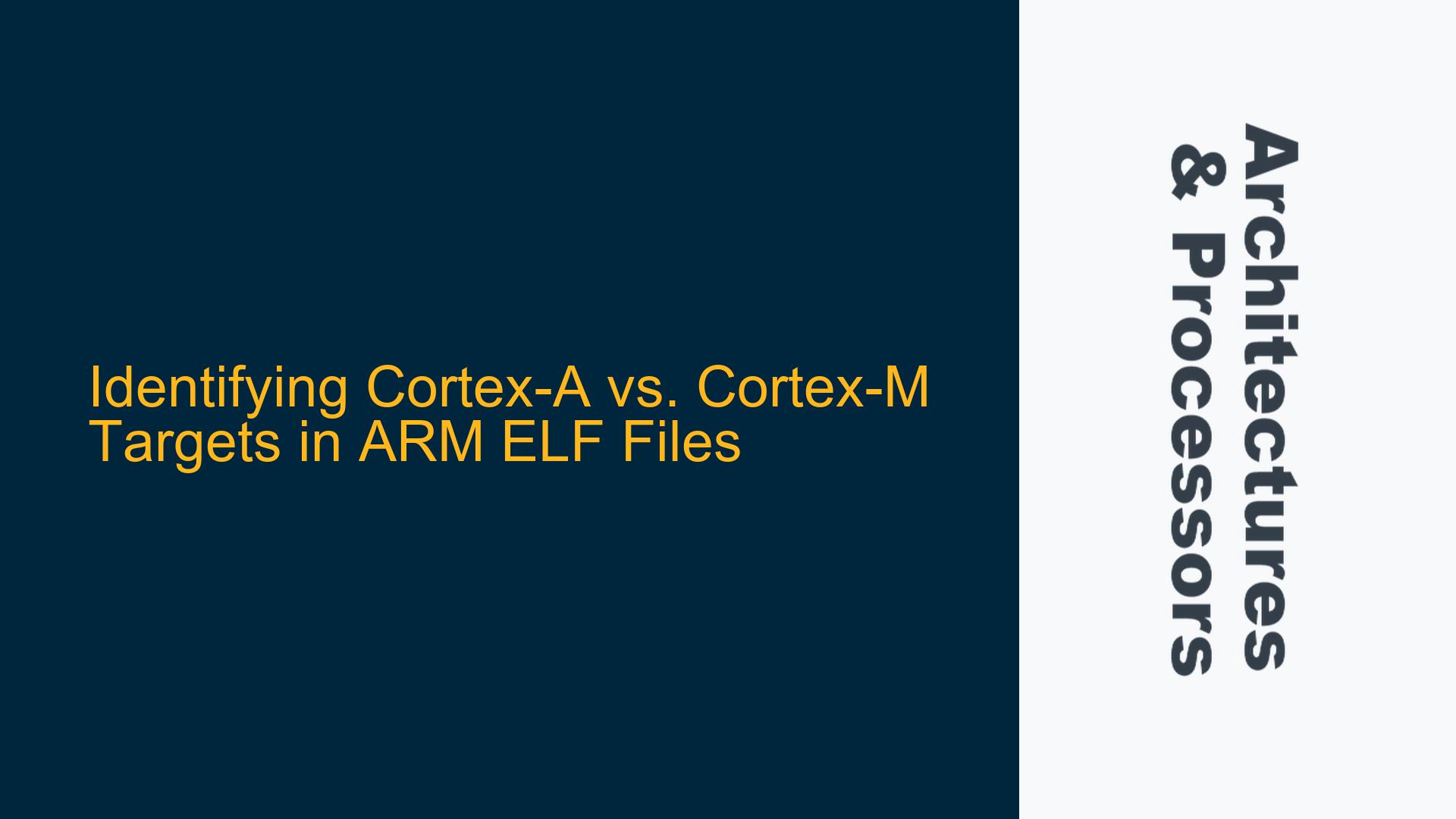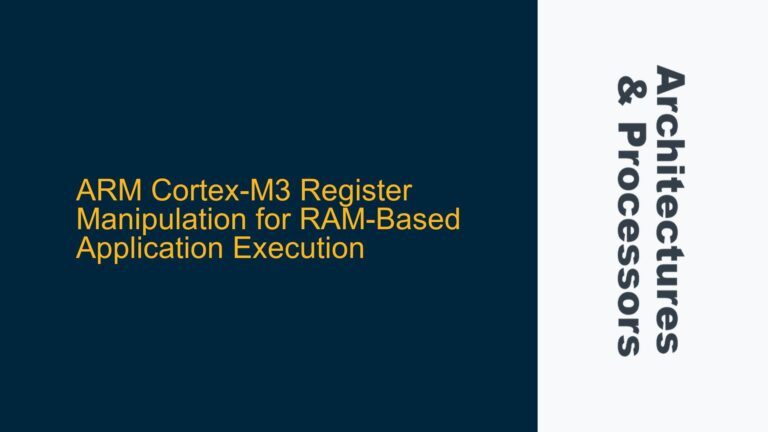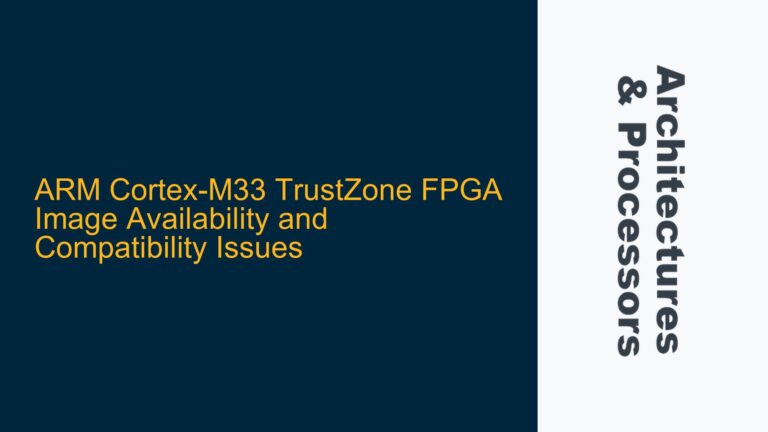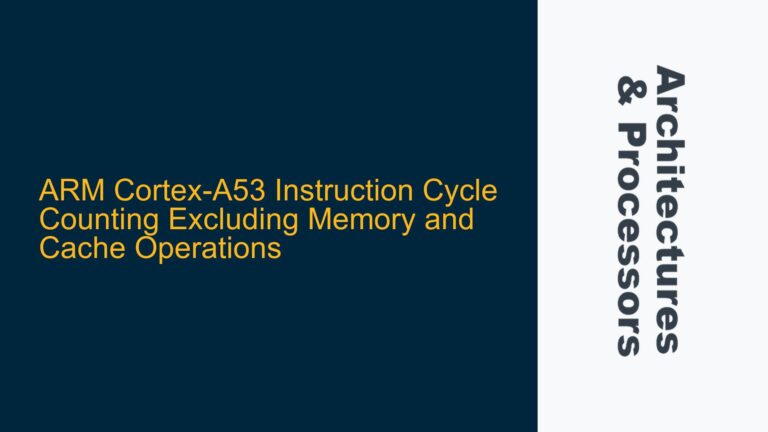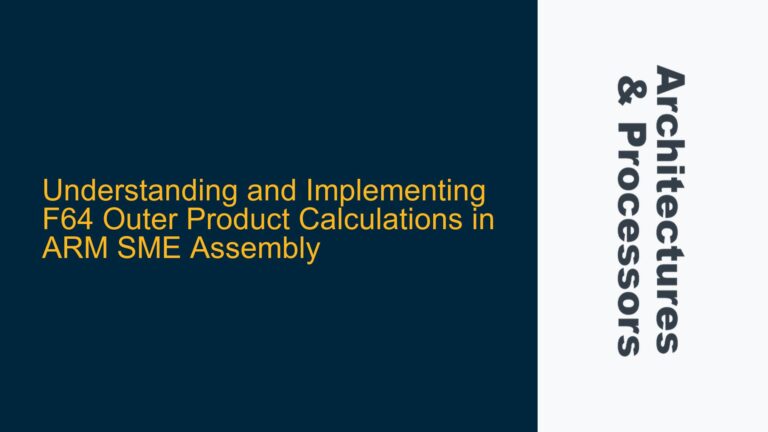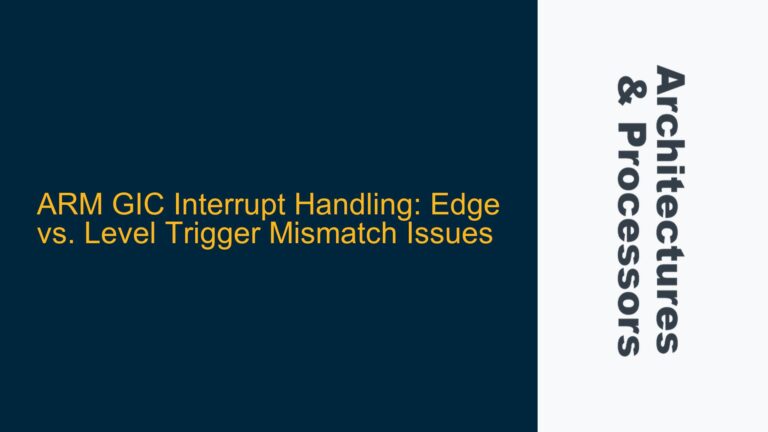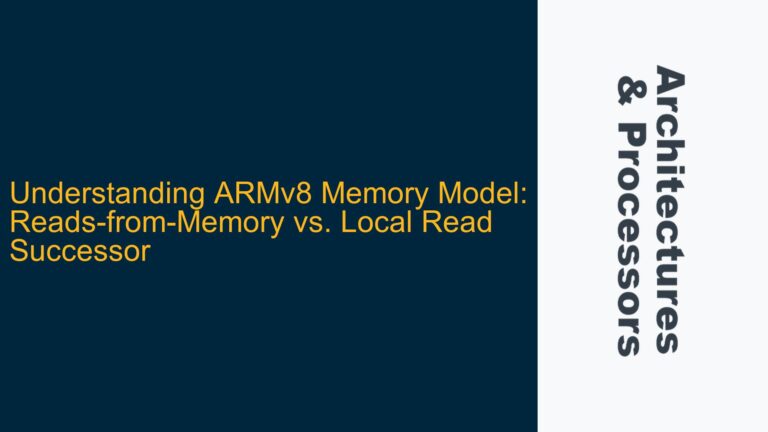ARM ELF File Architecture Identification Challenges
When working with ARM-based embedded systems, one of the most common tasks is analyzing and debugging ELF (Executable and Linkable Format) files. These files contain the compiled code, data, and metadata necessary for executing software on ARM processors. However, a recurring challenge arises when trying to determine whether a given ELF file is intended for a Cortex-A or Cortex-M processor. This distinction is critical because Cortex-A and Cortex-M processors have fundamentally different architectures, memory models, and use cases.
Cortex-A processors are typically used in application-oriented systems, such as Linux-based devices, where an MMU (Memory Management Unit) is present, and the memory map is more flexible. On the other hand, Cortex-M processors are designed for microcontroller applications, often running bare-metal or RTOS-based firmware, with a fixed memory map and no MMU. The differences in their architectures mean that software compiled for one family will not run on the other, making it essential to identify the target architecture accurately.
The challenge is compounded by the fact that standard tools like file and readelf -h only provide generic information about the ELF file, such as its 32-bit ARM architecture and endianness. They do not explicitly state whether the file is for Cortex-A or Cortex-M. This limitation can lead to confusion, especially when dealing with multi-world projects (e.g., TrustZone-based systems) or RTOS images where the ELF file’s metadata might not directly reveal the target architecture.
ELF File Metadata and ARM Architecture Attributes
To address the challenge of identifying the target architecture, we need to delve deeper into the ELF file’s metadata, specifically the ARM-specific attributes stored in the .ARM.attributes section. This section contains detailed information about the CPU architecture, instruction set, floating-point support, and other attributes that can help distinguish between Cortex-A and Cortex-M targets.
The readelf -A command is particularly useful for extracting this information. When applied to an ELF file, it displays the ARM architecture attributes, including the CPU name, architecture version, and profile. For example, a Cortex-M target might show attributes like Tag_CPU_name: "7E-M" and Tag_CPU_arch_profile: Microcontroller, while a Cortex-A target might display Tag_CPU_name: "Cortex-A53" and Tag_CPU_arch_profile: Application.
However, this approach has limitations. In some cases, particularly with multi-world projects or certain RTOS builds, the .ARM.attributes section might be missing or incomplete. This can happen when the build process does not explicitly include ARM-specific metadata or when the ELF file is stripped of non-essential sections to reduce size. In such scenarios, alternative methods must be employed to determine the target architecture.
Analyzing Memory Maps and Section Addresses
When ARM-specific attributes are unavailable, another effective method for distinguishing between Cortex-A and Cortex-M targets is to analyze the ELF file’s memory map and section addresses. Cortex-M processors have a fixed memory map defined by the ARMv7-M or ARMv8-M architecture, with specific address ranges reserved for flash, SRAM, and peripherals. For example, flash memory typically resides in the address range 0x00000000 to 0x1FFFFFFF, while SRAM is located in 0x20000000 to 0x3FFFFFFF.
By examining the readelf -S output, which lists the sections and their addresses, we can infer the target architecture. If the ELF file’s sections are mapped to addresses within the Cortex-M memory ranges, it is likely a Cortex-M target. Conversely, if the sections are mapped to arbitrary addresses, especially those outside the Cortex-M ranges, it is more likely a Cortex-A target. This method is particularly useful for bare-metal or RTOS-based firmware, where the memory map is tightly coupled to the hardware.
However, this approach is not foolproof. Cortex-A systems with custom memory maps or those using an MMU to remap memory can complicate the analysis. Additionally, some Cortex-M systems might use external memory or custom address ranges, blurring the distinction. Therefore, while memory map analysis is a valuable tool, it should be used in conjunction with other methods to ensure accurate identification.
Advanced Techniques for Multi-World and RTOS Projects
Multi-world projects, such as those using ARM TrustZone technology, present additional challenges for identifying the target architecture. These projects often generate multiple ELF files, such as FreeRTOSDemo_s.axf (secure world) and FreeRTOSDemo_ns.axf (non-secure world), each with its own memory map and attributes. In such cases, the readelf -A command might not provide useful output, as the ARM-specific attributes might be omitted or split across multiple files.
To address this, we can use a combination of techniques. First, we can analyze the entry point address and the initial sections of the ELF file. Cortex-M systems typically have a fixed vector table at the start of flash memory, with the reset handler located at a specific offset. By examining the entry point and the initial sections, we can infer whether the ELF file follows the Cortex-M vector table layout.
Second, we can use disassembly tools like objdump to inspect the code at the entry point. Cortex-M processors use the Thumb-2 instruction set exclusively, so the presence of Thumb-2 instructions at the entry point strongly suggests a Cortex-M target. In contrast, Cortex-A processors can use both ARM and Thumb-2 instructions, making the instruction set a less definitive indicator but still useful in combination with other clues.
Finally, for RTOS-based projects, we can look for RTOS-specific symbols or patterns in the ELF file. For example, FreeRTOS uses specific function names and data structures that can be identified using nm or readelf -s. The presence of these symbols can help confirm that the ELF file is intended for a Cortex-M target, as FreeRTOS is commonly used in microcontroller applications.
Practical Workflow for Identifying Cortex-A vs. Cortex-M Targets
To summarize, here is a practical workflow for identifying whether an ELF file is for Cortex-A or Cortex-M:
-
Check ARM-Specific Attributes: Use
readelf -Ato extract the.ARM.attributessection. Look forTag_CPU_name,Tag_CPU_arch, andTag_CPU_arch_profileto determine the target architecture. If these attributes are present and indicate a Cortex-M or Cortex-A profile, the identification is straightforward. -
Analyze Memory Map and Section Addresses: Use
readelf -Sto examine the section addresses. Compare these addresses to the Cortex-M memory map. If the sections are mapped to Cortex-M address ranges, it is likely a Cortex-M target. Otherwise, consider it a Cortex-A target. -
Inspect Entry Point and Initial Code: Use
objdumpto disassemble the code at the entry point. Look for Thumb-2 instructions, which are indicative of Cortex-M. Also, check for a Cortex-M vector table layout at the start of the file. -
Look for RTOS-Specific Symbols: Use
nmorreadelf -sto search for RTOS-specific symbols. The presence of these symbols can help confirm a Cortex-M target, especially in RTOS-based projects. -
Cross-Validate Findings: Combine the results from the above steps to cross-validate the target architecture. If multiple indicators point to the same conclusion, the identification is more reliable.
By following this workflow, you can confidently determine whether an ELF file is intended for a Cortex-A or Cortex-M processor, even in complex scenarios involving multi-world projects or RTOS-based firmware. This approach leverages the strengths of each method while mitigating their individual limitations, providing a robust solution to a common challenge in ARM embedded systems development.
